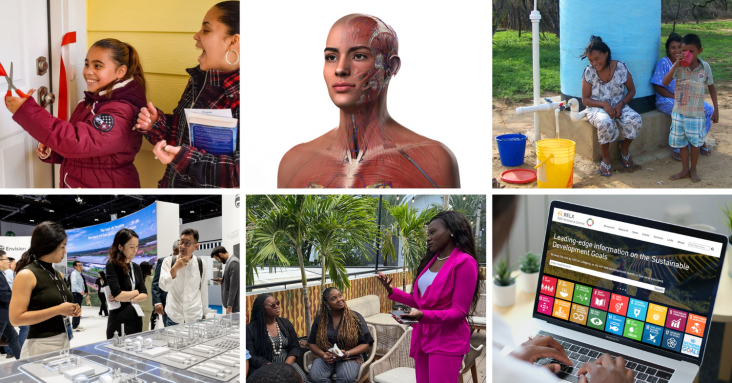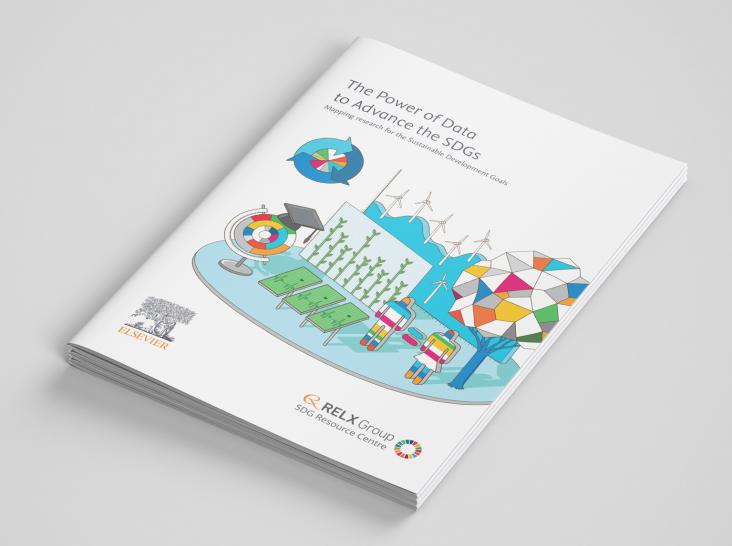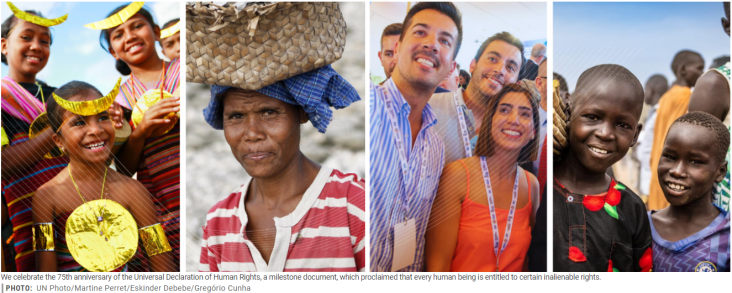
As we pass the halfway point for the SDGs, many of the goals are worryingly off track and progress on 85% of the target indicators has stalled or even reversed. Through our information, products and people, RELX remains committed to advancing the Goals. Here are some of the ways that we continue to support their achievement.

Access to information is critical in achieving the SDGs - empowering the public to make decisions, informing policy making and enabling effective implementation and monitoring. RELX businesses regularly produce and publish free to download reports and analytics that draw upon vast amounts of information and data in support of the SDGs. Explore some of the reports and tools developed to date.
This article ties into SDG 3, 10, and 13 by compiling in a Systematic Review the effects of extreme weather events on access to HIV services
In this Viewpoint, an international panel of clinicians, scientists, and community members with lived experiences of autism reviewed the challenges in identifying autism in individuals who are assigned female at birth and proposed clinical and research directions to promote the health, development, and wellbeing of these individuals.
Women interact with cancer in complex ways, as healthy individuals participating in cancer prevention, as patients, as health professionals, researchers, policymakers, and as unpaid caregivers. In all these domains, women often are subject to overlapping forms of discrimination, such as due to age, race, ethnicity and socio-economic status, that render them structurally marginalized. Women, power and cancer: A Lancet Commission recommends that sex and gender be included in all cancer-related policies and guidelines, making these responsive to the needs and aspirations of women in all their diversities. It identifies ten priority actions stakeholder groups can take towards lasting and impactful change.
A sustainable future requires securing of the fundamental relationship between humans and biodiversity. This article highlights the importance of tapping into Indigenous and local knowledge for the conservation of biodiversity

10 December 2023 marks the 75th anniversary of one of the world's most groundbreaking global pledges: the Universal Declaration of Human Rights (UDHR).
Residents of Australia’s remote regions have lower life expectancies and poorer health outcomes than other Australians. Access to hospital and specialist care frequently requires transport via road or air and time spent away from family and community. The paper explores consumer perspective and identifies areas for improvement.
This content aligns with Goal 3: Good Health by exploring potential nutraceutical interventions for autism and related disorders, which can enhance therapeutic strategies and improve health outcomes for individuals affected by these conditions. By investigating the roles of various dietary and environmental factors, the study aims to provide a more nuanced understanding of autism's complex etiology, potentially leading to more effective management options. Additionally, it supports Goal 10: Reduced Inequalities by emphasizing the need for accessible and diverse treatment approaches, such as nutraceuticals, which can offer individuals and families more options for managing autism, regardless of their socioeconomic status or access to traditional healthcare resources.
Elsevier,
Symptomatic: The Symptom-Based Handbook for Ehlers-Danlos Syndromes and Hypermobility Spectrum Disorders, 2024, Pages 135-144
This content aligns with Goal 3: Good Health by exploring the systemic nature of attention-deficit hyperactivity disorder (ADHD) and its associations with other physical and mental health issues, emphasizing the need for comprehensive treatment approaches that address various underlying factors, including autonomic dysfunction and neuroinflammation. By proposing new targets for treatment, the chapter promotes a more holistic understanding of ADHD that can lead to improved health outcomes for affected individuals. Additionally, it supports Goal 10: Reduced Inequalities by highlighting the importance of recognizing and addressing the complex interplay of conditions that often accompany ADHD, ensuring that all individuals receive equitable and effective care tailored to their unique health needs, regardless of their background or circumstances.
